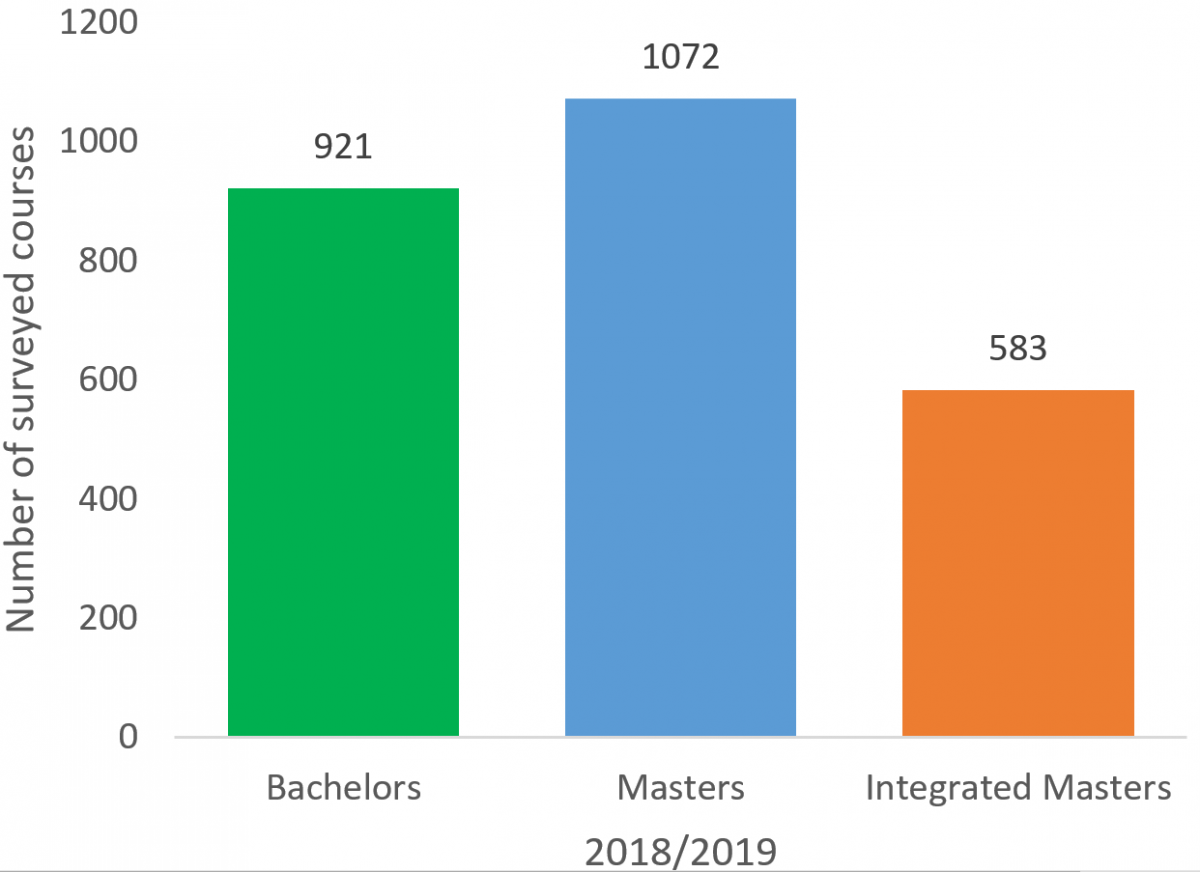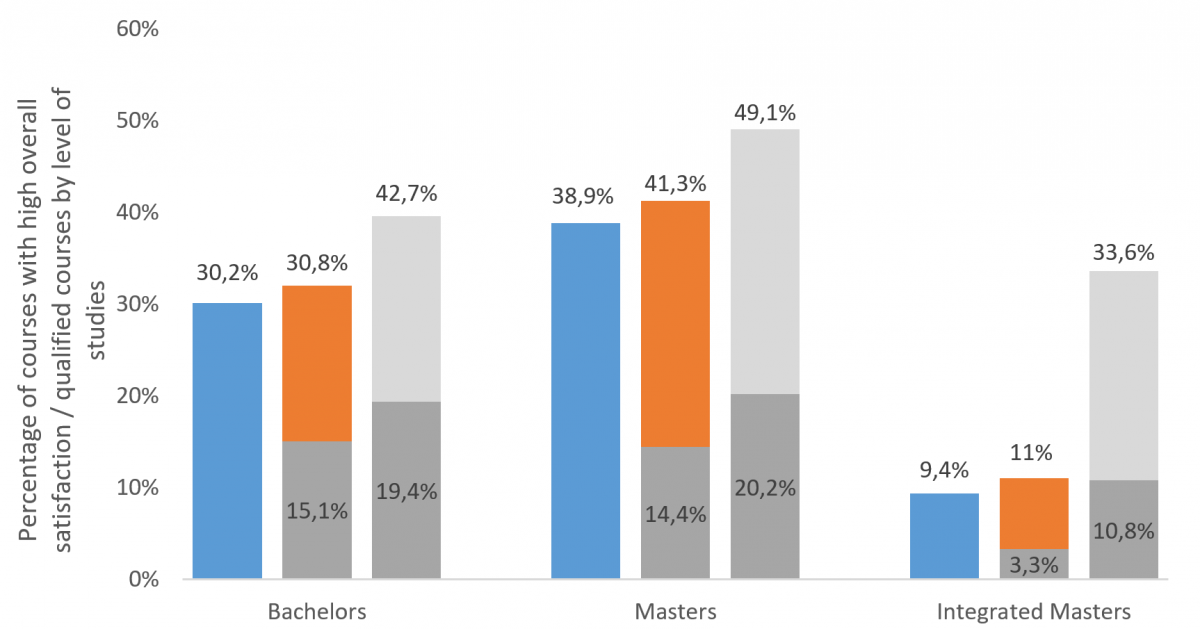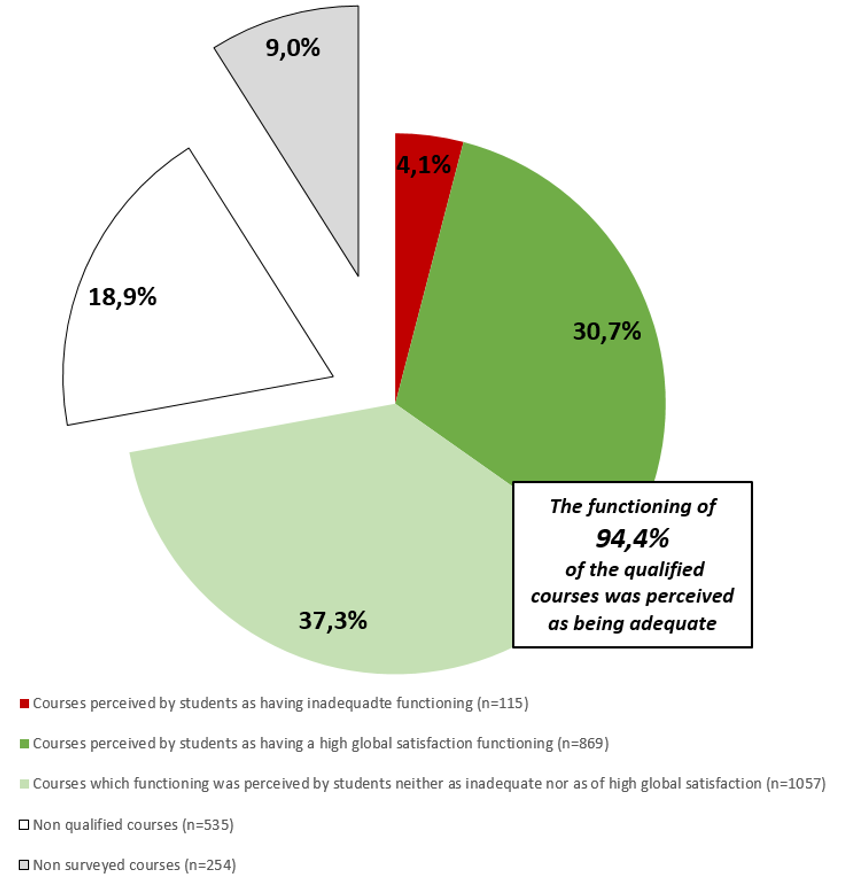The academic year 2018/2019 was a transition year, both in terms of the review of various Quality instruments and in terms of their implementation in the Organic Units (UO), including the questionnaire on students' perceptions about the functioning of the courses. The resulting NOVA's global annual report - academic year 2018 / 2019 presents the summary of the main results of the student survey.
In 2018/2019, the total number of 2 576 courses was surveyed. Figure 1 shows the distribution of the surveyed courses, by level of studies (Bachelors, Masters and Integrated Masters).

Regarding the response rate (number of responses to survey questions / total number of students enrolled in the course), there was a decrease, compared to the previous academic year, in all levels of studies, with a more evident decrease with Bachelors. With regard to the response rate of Master’s and Integrated Master’s students, despite the slight increase that had occurred in the academic year 2017/2018, it also decreased slightly in the academic year under analysis, as shown in Figure 2.

The focus of analysis of the courses was on the screening, on the one hand, of those that presented inadequate functioning and, on the other hand, of those that showed high overall satisfaction.
The percentage of courses that showed inadequate functioning in 2018/2019 (Figure 3), decreased, in the last academic year, in the total of the three levels of studies, from 6.6% to 5.6%, that is 115 inadequate courses in 2041 qualified courses (courses whose characterization of the response was above a minimum threshold of representativeness), and it was in the question regarding perceived global satisfaction that more evaluations were considered low. In the previous academic year, 146 inadequate courses were found among 2210 qualified courses (6.6%).
The percentage of courses with recurrent inadequate functioning (courses with inadequate functioning in the last academic year and also in at least one of the previous two academic years) is higher in the Integrated Masters, followed by the Bachelors and the Masters, as shown in figure 3.

Regarding the overall satisfaction perceived with the functioning of the courses, in 2018/2019, there was a very positive evolution of the assessments that were considered high (Figure 4), going from 30% (662/2210) to 42.6% (869/2041). The percentage of courses with recurring high global functioning satisfaction (courses with high global functioning satisfaction in the last academic year and also in at least one of the two previous academic years) was substantially the same in the Bachelors’ and Masters’ degrees, and came to approximately half of this value in the Integrated Masters, as shown in figure 4.

From NOVA's global point of view in 2018/2019, as shown in figure 5, in view of the number of operating courses, it is worth highlighting the very positive general evolution in relation to the previous academic year, with the percentage of courses with high overall satisfaction, growing from 21.9% to 30.7%, and that of courses with inadequate functioning, decreasing from 4.8% to 4.1%. It can also be seen that 94.4% of the qualified courses were not perceived as having inadequate functioning.
